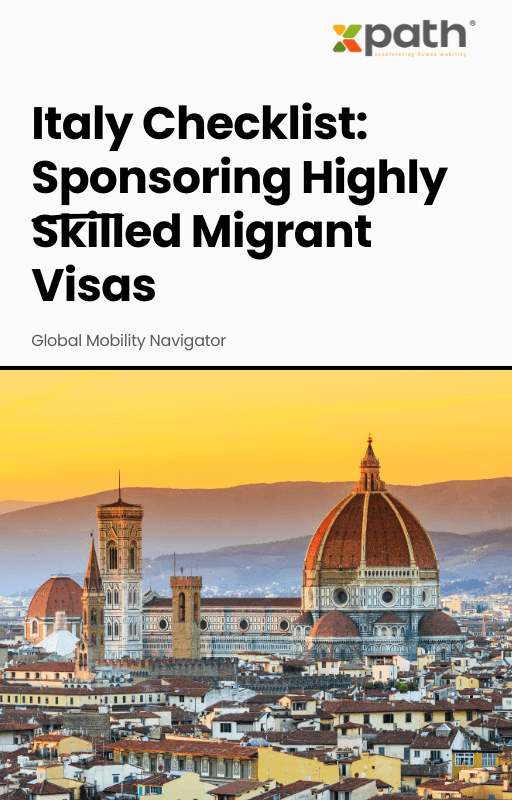Italy Checklist: Sponsoring Highly Skilled Migrant Visas
Grab a copy of a guide to international employee relocation
View E-bookIn a recent strategic move to enhance its migration management system, Lithuania has enacted new regulations to tighten the conditions for the employment of foreign workers. This decision reflects the country’s commitment to managing rapid demographic changes and ensuring national security. We delve into the specifics of these regulations, their implications for employers and foreign workers, and the broader context of the EU’s migration reform.
The Lithuanian government, under the guidance of Minister of Interior Agnė Bilotaitė, has introduced stricter requirements for employers hiring foreign workers. These regulations include:
Licensing and Reporting Obligations: Employers must now hold the appropriate licenses to employ foreign workers. Additionally, they are mandated to report any changes in the employment status or personal details of their foreign employees.
Full-Time Employment Mandate: To curb potential abuses, Lithuanian employers are required to offer full-time positions to foreign workers. Hence, this regulation aims to ensure that employment is not fragmented and provides greater stability for foreign workers.
The revised regulations impose several new conditions on foreign workers, including:
Qualification Disclosure: Foreign workers must provide detailed information about their qualifications and professional experience. As, this requirement is designed to ensure that only suitably skilled individuals are employed.
Employment Limitations: Foreign workers are now restricted to working for no more than four employers. This rule seeks to prevent exploitation and ensure that workers are not overextended or misused.
Residence Permit Requirement: Only foreign nationals with a valid residence permit are permitted to work in Lithuania. Employment under the visa-free regime or on a Schengen visa is now prohibited.
While the new regulations are stringent, there are exceptions for specific groups:
Exception for Certain Professions: Researchers, educators, and individuals from economically advanced countries may be exempt from some of these restrictions, reflecting Lithuania’s recognition of their contribution to specialized fields.
Workforce Quota: A new cap has been introduced, limiting foreign workers to 1.4% of the total permanent resident population annually. This measure aims to balance the influx of foreign workers with the capacity of the local job market.
Lithuania’s new regulations align with broader EU efforts to reform migration policies. The EU’s Migration and Asylum Pact emphasizes solidarity and shared responsibility among member states, aiming to streamline asylum procedures and improve conditions for migrants. Whereas, Lithuania’s support for these reforms underscores its commitment to a unified European approach to migration management.
The reforms are designed to address the misuse of migration systems and potential crises. By tightening employment conditions and aligning with EU policies, Lithuania aims to create a more effective and controlled migration environment, balancing national interests with humanitarian considerations.
Lithuania’s implementation of stricter employment regulations for foreign workers marks a significant shift in its migration policy. These changes are intended to enhance control over migration flows, ensure national security, and align with EU-wide reforms. Note, that both employers and foreign workers will need to adapt to the new requirements, which reflect a broader trend towards more regulated and transparent migration systems.
Hence, the integration of these measures within the framework of the EU’s Migration and Asylum Pact highlights Lithuania’s proactive stance on managing migration and reinforces its commitment to both national and European objectives.
To learn more about xpath.global’s benefits management system, book a meeting here: Book a demo – Human Resource Professionals – xpath.global

Italy Checklist: Sponsoring Highly Skilled Migrant Visas
Grab a copy of a guide to international employee relocation
View E-book